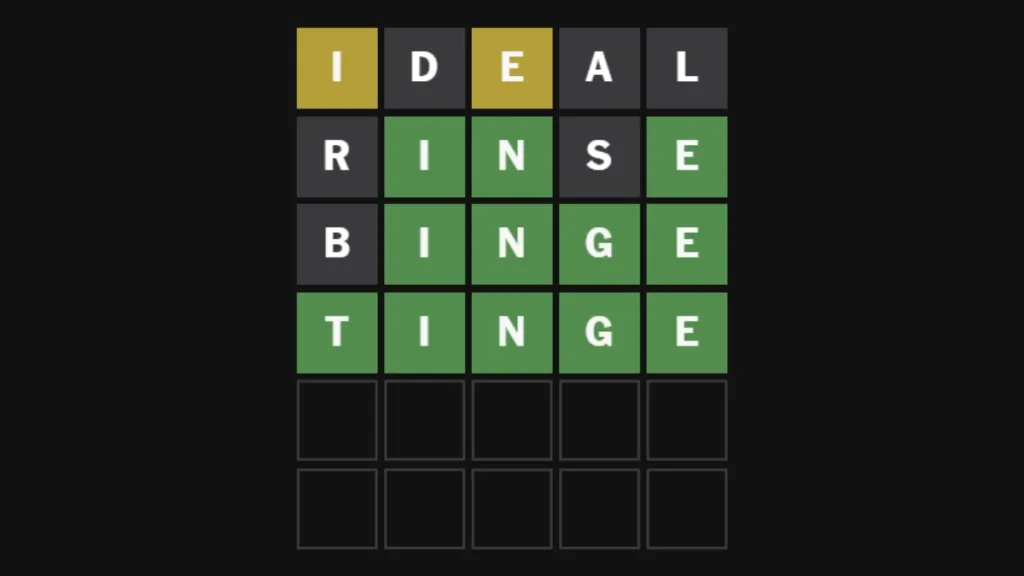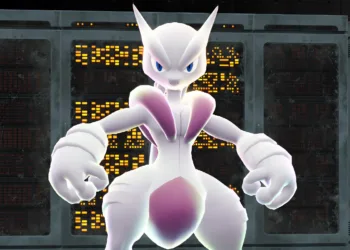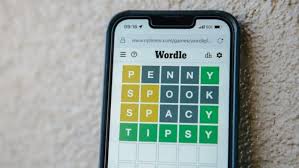Today’s Wordle puzzle continues the beloved daily word challenge that has captivated millions of players worldwide. Wordle #1608 for Thursday, November 13, 2025, presents a moderately challenging five-letter word that tests your vocabulary and strategic thinking. Whether you’re on your morning coffee break or winding down your evening, this guide provides everything you need—from subtle hints to the complete answer—ensuring you maintain your winning streak without spoiling the satisfaction of solving it yourself.
Table of Contents
NYT Stats: How Players Performed Today
According to WordleBot analytics, today’s puzzle showed interesting performance metrics. The average player completed Wordle #1608 in 3.7 guesses, with approximately 34.3% of players solving it within three attempts or fewer. The luck score registered at 61.8 out of 99, indicating moderate difficulty in eliminating possible solutions efficiently. Meanwhile, the skill score reached an impressive 83.0 out of 99, suggesting players made strategically sound guesses based on available information.
Strategic Hints to Crack Today’s Puzzle
Before revealing the answer, let’s walk through progressive hints that help you solve it independently. Start with these clues and see how far you get:
Hint 1: Letter Composition Today’s word contains exactly two vowels distributed throughout the five-letter word. No consonant clusters make pronunciation tricky, and there are no repeated letters—each letter appears only once.

Hint 2: Starting Letter The word begins with the letter “T,” which appears in approximately 16% of five-letter English words. This common starting letter should help narrow your initial guesses considerably.
Hint 3: Meaning Context Think about subtle qualities or characteristics. This word describes a slight trace or faint degree of something—often used when discussing colors, flavors, or qualities that aren’t fully dominant but definitely present.
Hint 4: Word Usage You might use this word when describing “a _____ of sadness” or “a _____ of blue in the sky.” It’s commonly employed in literary contexts to convey nuanced descriptions.
Today’s Wordle Performance Breakdown
| Metric | Value | What It Means |
|---|---|---|
| Average Guesses | 3.7 | Moderate difficulty compared to typical 3.5-4.0 range |
| Solved in ≤3 Guesses | 34.3% | Above-average first-guess success rate |
| Luck Score | 61.8/99 | Moderate—good guesses helped eliminate options |
| Skill Score | 83.0/99 | High strategic efficiency in word selection |
| Vowels Present | 2 | Standard vowel distribution |
| Repeated Letters | None | Each letter appears once |
| Starting Letter | T | Common starting consonant |
The Complete Answer (Spoiler Warning!)
If you’ve exhausted your guesses or simply want to know today’s solution, scroll down carefully. Last chance to turn back!
Today’s Wordle Answer: TINGE
Congratulations if you solved it! If not, don’t worry—tomorrow brings a fresh puzzle and another opportunity to showcase your word-solving prowess.
Fascinating Facts About “TINGE”
The word “tinge” carries rich linguistic heritage and practical applications worth exploring. Etymologically, “tinge” traces back to the Latin word “tingere,” meaning “to dye” or “to color.” This connection to coloring and dyeing processes reveals how the word evolved to describe subtle variations in appearance or quality.
The word entered English vocabulary during the late 15th century, demonstrating remarkable longevity in descriptive language. Writers and speakers have relied on “tinge” for over 500 years to articulate those nuanced qualities that aren’t quite dominant but unmistakably present.
In contemporary usage, “tinge” appears frequently in literary contexts describing emotions—”a tinge of regret,” “a tinge of hope”—or atmospheric qualities like “a tinge of autumn in the air.” This versatility makes it invaluable for precise communication when discussing subtle characteristics.

Artists and designers particularly appreciate “tinge” when describing color theory. Rather than saying “slightly blue,” they might say “tinged with blue,” which conveys both the base color and its modification more elegantly. Similarly, culinary professionals use it to describe flavor profiles: “a tinge of cinnamon” suggests just enough presence to notice without overwhelming.
Yesterday’s Solution: Wordle #1607
Missed yesterday’s puzzle? The answer for November 12, 2025, was DEUCE—the tennis term for a tied score at 40-40, derived from French origins. WordleBot reported an average of 3.8 guesses, with 27.7% solving it within three attempts. The double vowels and less common everyday usage made it slightly trickier than today’s word.
Recent Wordle Answers (November 8-12)
| Date | Puzzle # | Answer | Difficulty |
|---|---|---|---|
| Nov 12 | #1607 | DEUCE | 3.8 avg guesses |
| Nov 11 | #1606 | GIZMO | 3.5 avg guesses |
| Nov 10 | #1605 | TABBY | 3.6 avg guesses |
| Nov 9 | #1604 | FUGUE | 4.1 avg guesses |
| Nov 8 | #1603 | ARISE | 3.4 avg guesses |
Proven Strategies for Wordle Success
Starting with vowel-rich words like ADIEU, AUDIO, or ARISE helps identify vowel positions early. Follow up with consonant-heavy words incorporating common letters like R, S, T, L, and N. Avoid reusing eliminated letters, and pay attention to letter frequency—some letters appear far more commonly than others in five-letter English words.
Advanced players use pattern recognition and elimination strategies. If your first guess reveals a correct letter in the wrong position, subsequent guesses should test that letter in different positions while introducing new letters. This balanced approach maximizes information gained per guess.
For comprehensive word game strategies, explore our complete Wordle strategy guide and discover advanced word puzzle solving techniques.
How Wordle Maintains Global Appeal
Since its 2021 creation by Josh Wardle and subsequent acquisition by The New York Times, Wordle has maintained remarkable consistency and appeal. The once-daily format creates shared cultural moments where millions tackle identical puzzles simultaneously. Social media erupts each morning with colored square patterns representing guesses without spoiling answers—a brilliant design encouraging community engagement without ruining the experience.
The game’s simplicity masks sophisticated design decisions. Six guesses provides the perfect balance between challenge and accessibility. Too few attempts would frustrate casual players, while too many would reduce the accomplishment feeling. The five-letter word length sits in the vocabulary sweet spot—familiar enough that most native English speakers can solve puzzles, yet vast enough (over 12,000 possible answers) to prevent repetition for years.
Frequently Asked Questions
Q: Does Wordle ever repeat answers that have appeared previously?
No, The New York Times maintains a curated list of Wordle answers ensuring no word repeats. Once a word appears as the daily solution, it’s permanently removed from the answer pool. However, words that appeared as guesses (but not answers) could theoretically become future solutions. The NYT also filters out potentially offensive words, extremely obscure terms, and plurals ending in S to maintain appropriate difficulty and accessibility. This curation ensures every puzzle feels fresh while staying within vocabulary ranges most players can reasonably know.
Q: What’s the optimal starting word according to data analysis and experts?
Mathematical analysis of letter frequency suggests starting words containing common vowels (A, E, I) and high-frequency consonants (R, S, T, L, N). Popular optimal starters include ADIEU, ARISE, SLATE, CRANE, and STARE. ADIEU maximizes vowel discovery with four vowels, while CRANE balances vowels and consonants effectively. However, “optimal” depends on your strategy—some players prefer consonant-heavy starts like STUMP or BLITZ to quickly eliminate letter possibilities. Consistency matters most; using the same strong starter daily helps you recognize patterns and develop muscle memory for subsequent guesses. Experiment to find what works best for your solving style.








